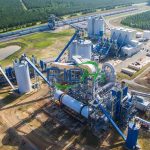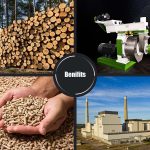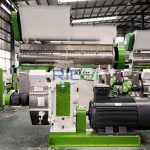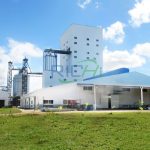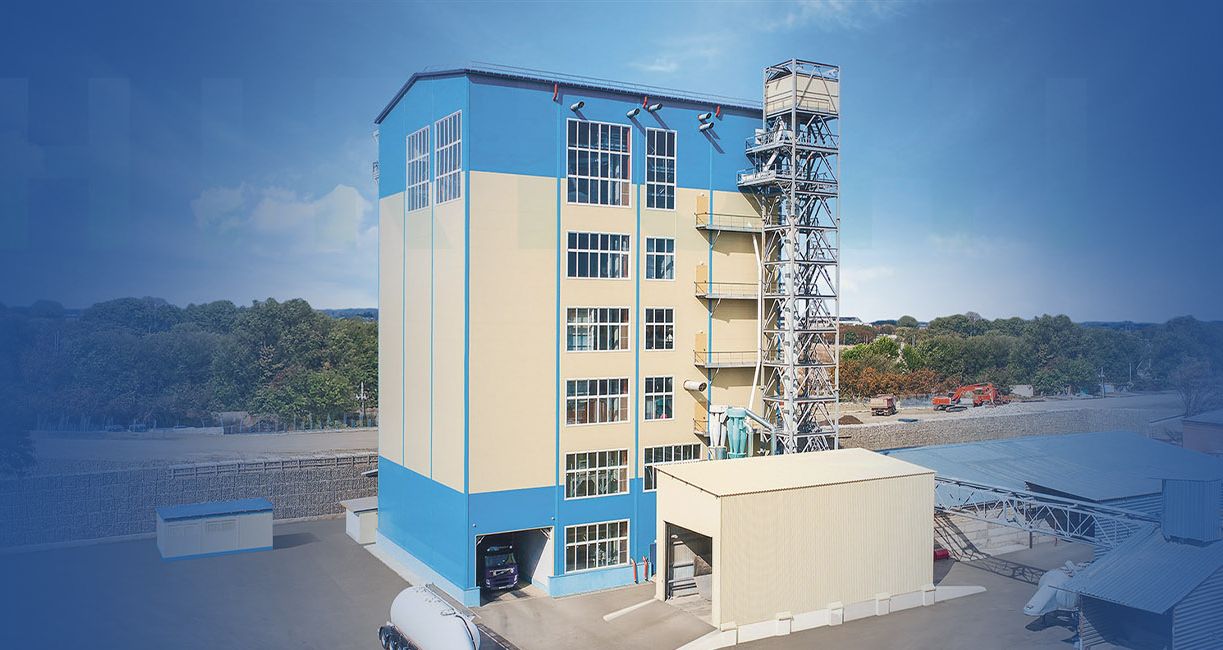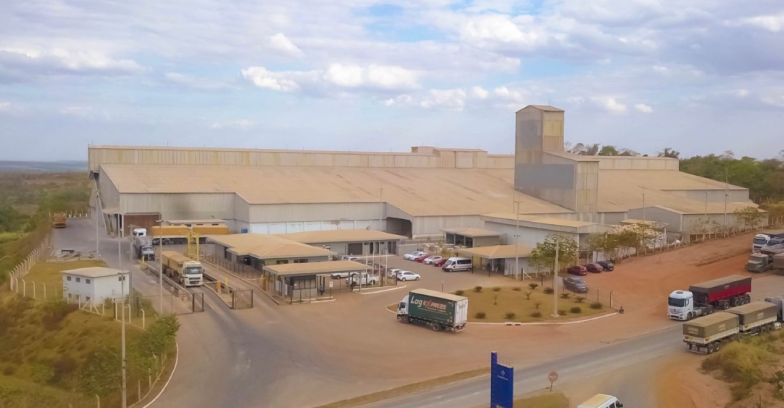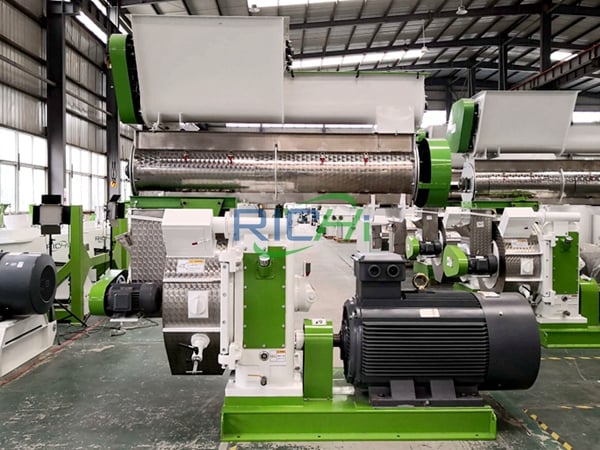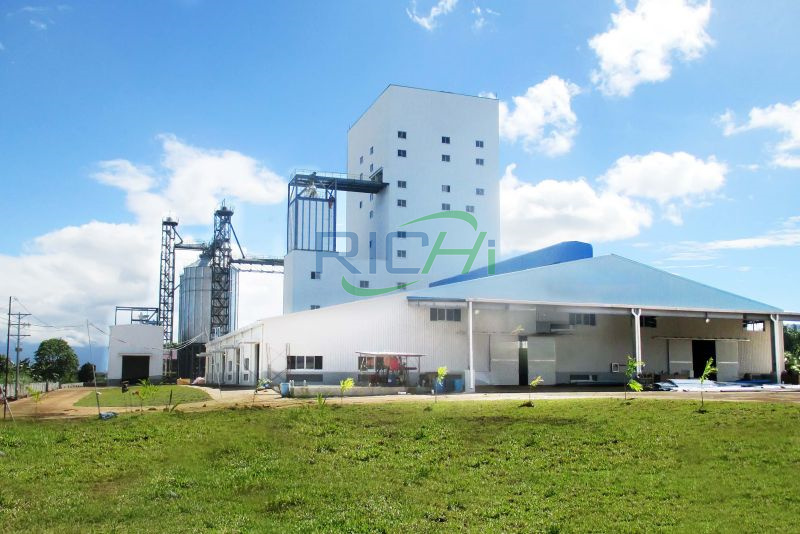Establishing a 10 tons per hour (t/h) animal feed manufacturing plant requires significant capital investment. While various factors contribute to the total investment, equipment costs form a substantial portion of the overall expenditure. This article explores the percentage of total investment that equipment costs typically represent in a 10t/h animal feed manufacturing plant and the factors that influence this allocation.
Overview of a 10t/h Animal Feed Manufacturing Plant
A 10t/h animal feed plant is considered a medium-scale operation in the feed industry. Such a plant can produce approximately 80 tons of feed per 8-hour shift or around 240 tons per day, assuming 24-hour operation. The annual production capacity can reach up to 70,000-80,000 tons, depending on operational efficiency and downtime.
Key Components of Total Investment
The total investment for a 10t/h animal feed manufacturing plant typically includes:
- Land acquisition and site preparation
- Building and civil works
- Equipment and machinery
- Installation and commissioning
- Utilities and infrastructure
- Working capital
- Pre-operative expenses
- Contingencies
Equipment Cost BreakdownThe equipment for a 10t/h animal feed plant typically includes:
- Raw material handling equipment (silos, conveyors, elevators)
- Grinding equipment (hammer mills)
- Mixing equipment
- Pelleting equipment
- Cooling and drying equipment
- Packaging equipment
- Auxiliary equipment (boilers, compressors, etc.)
- Control systems and automation
Percentage of Equipment Cost in Total Investment
Based on industry data and expert estimates, the equipment cost for a 10t/h animal feed manufacturing plant typically accounts for 50-60% of the total investment. This percentage can vary depending on several factors, which we will explore in detail.Factors Influencing Equipment Cost Percentage
- Level of Automation
Plants with higher levels of automation tend to have a larger portion of their investment allocated to equipment. Advanced automated systems can push the equipment cost percentage towards the higher end of the range (closer to 60%). - Quality of Equipment
Opting for high-quality, premium brand equipment will increase the equipment cost percentage. While this may raise initial investment, it often leads to better efficiency and lower maintenance costs in the long run. - Scope of Auxiliary Equipment
The extent of auxiliary equipment included, such as laboratory equipment, quality control systems, and environmental control systems, can significantly impact the equipment cost percentage. - Land and Building Costs
In areas with high land and construction costs, the relative percentage of equipment costs may be lower, even if the absolute equipment costs remain the same. - New vs. Used Equipment
Choosing used or refurbished equipment can lower the equipment cost percentage, but this decision should be weighed against potential efficiency losses and higher maintenance costs. - Customization Requirements
Highly customized equipment to meet specific production needs or local regulations can increase the equipment cost percentage. - Source of Equipment
Importing equipment from developed countries typically increases costs compared to sourcing from local or regional manufacturers, potentially raising the equipment cost percentage.
Related post: animal feed pellet machine price
Breakdown of Equipment Costs
Within the equipment cost allocation, the distribution typically follows this pattern:
- Pelleting equipment: 25-30%
- Grinding equipment: 15-20%
- Mixing equipment: 10-15%
- Raw material handling equipment: 10-15%
- Cooling and drying equipment: 10-15%
- Packaging equipment: 5-10%
- Auxiliary equipment: 10-15%
- Control systems and automation: 5-10%
Case Study: 10t/h Animal Feed Plant Investment
Let’s consider a hypothetical case study to illustrate the equipment cost percentage:
Total Investment: $5,000,000
Equipment Cost Breakdown:
- Pelleting equipment: $700,000
- Grinding equipment: $400,000
- Mixing equipment: $300,000
- Raw material handling: $350,000
- Cooling and drying: $300,000
- Packaging equipment: $200,000
- Auxiliary equipment: $350,000
- Control systems: $200,000
Total Equipment Cost: $2,800,000In this case, the equipment cost represents 56% of the total investment, falling within the typical range of 50-60%.
Other Investment Components:
- Land and site preparation: $500,000 (10%)
- Building and civil works: $800,000 (16%)
- Installation and commissioning: $300,000 (6%)
- Utilities and infrastructure: $200,000 (4%)
- Working capital: $250,000 (5%)
- Pre-operative expenses: $100,000 (2%)
- Contingencies: $50,000 (1%)
Implications of Equipment Cost Percentage
Understanding the equipment cost percentage is crucial for several reasons:
- Financial Planning
A higher equipment cost percentage may require more upfront capital or different financing strategies. Investors and lenders often look at this ratio when assessing project viability. - Operational Efficiency
Generally, a higher equipment cost percentage indicates a more modern and efficient plant, which can lead to lower operational costs and higher productivity in the long run. - Depreciation and Tax Implications
Equipment costs are typically depreciated over several years, impacting the plant’s financial statements and tax obligations differently compared to other investment components. - Future Expansion Considerations
Plants with a higher equipment cost percentage may be better positioned for future capacity expansions, as they often have more advanced and scalable systems in place. - Competitive Advantage
Investing more in equipment can provide a competitive edge through improved product quality, consistency, and production flexibility.
Conclusion
In a 10t/h animal feed manufacturing plant, equipment costs typically account for 50-60% of the total investment. This significant portion underscores the importance of careful equipment selection and investment planning. While a higher equipment cost percentage may increase initial capital requirements, it often translates to improved operational efficiency, product quality, and long-term profitability.
Investors and plant managers must carefully balance the desire for advanced, efficient equipment against budget constraints and market demands. Factors such as automation level, equipment quality, customization needs, and sourcing strategies all play crucial roles in determining the final equipment cost percentage.
Ultimately, the decision on equipment investment should be made with a long-term perspective, considering not just the initial costs but also the potential for improved productivity, reduced operational expenses, and enhanced market competitiveness. By carefully analyzing these factors and aligning equipment investments with overall business strategy, feed manufacturers can optimize their capital allocation and position themselves for success in the competitive animal feed industry.
For details please contact: pellet machine
WhatsApp:86 138 3838 9622
Email:enquiry@richipelletmachine.com


